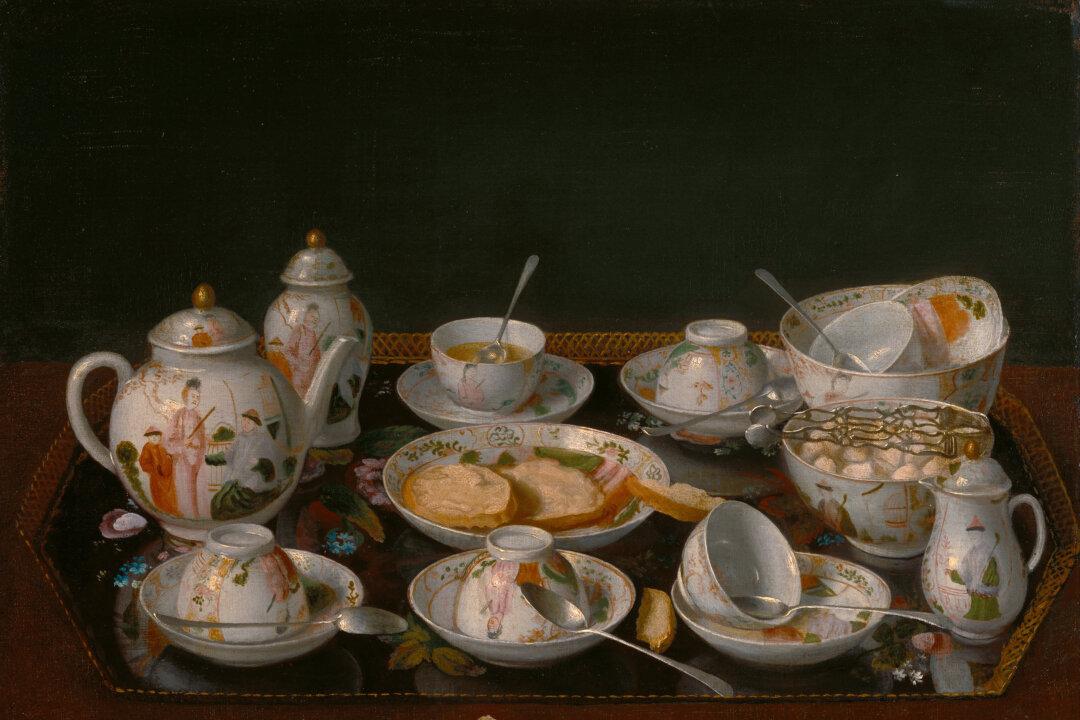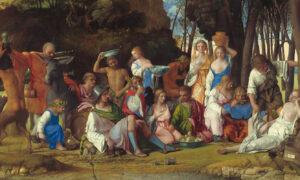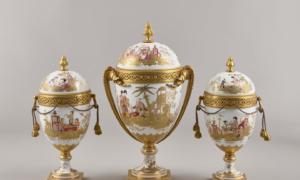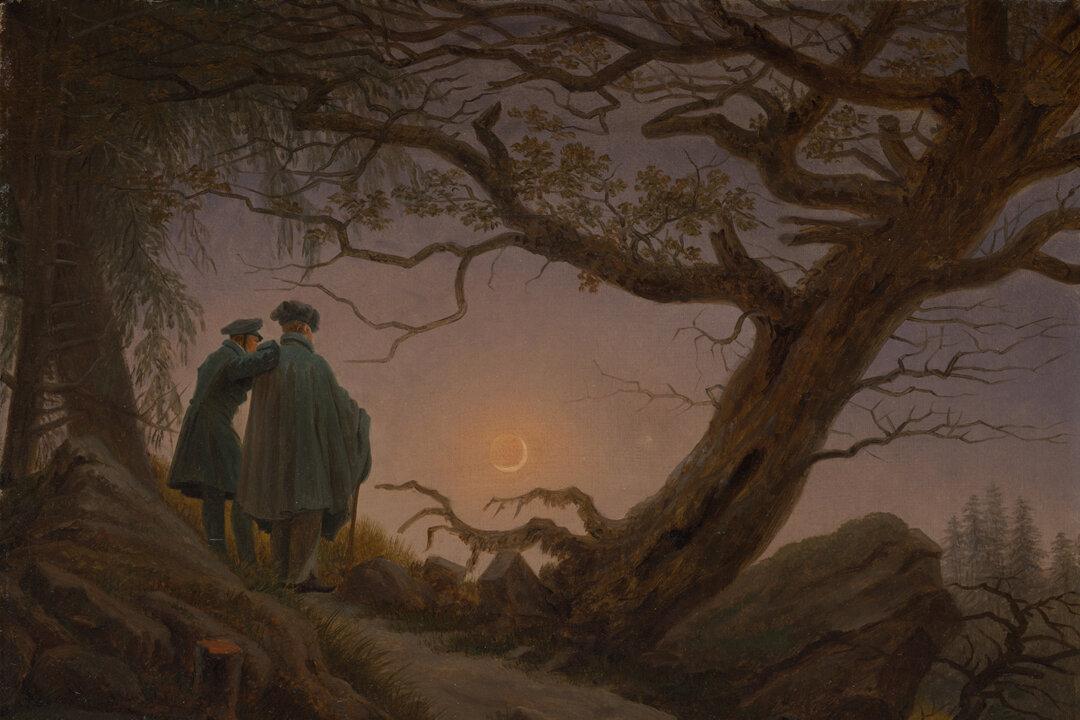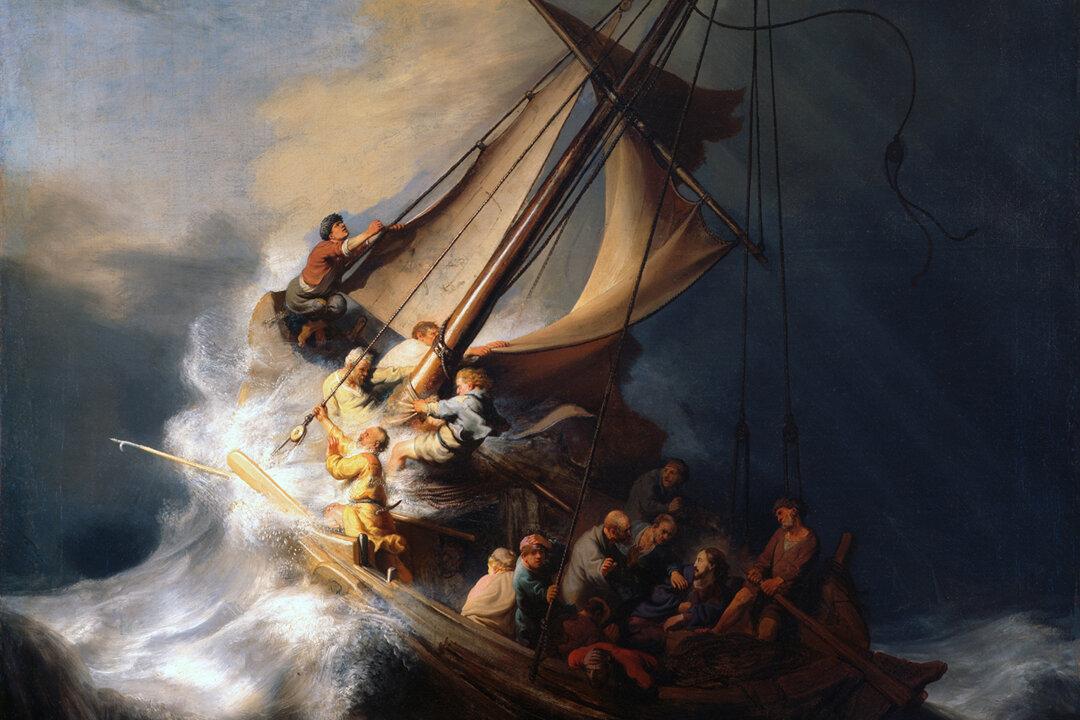“If you are cold, tea will warm you; if you are too heated, it will cool you; If you are depressed, it will cheer you; if you are excited, it will calm you.” This quote is attributed to British Prime Minister William Ewart Gladstone. The explanation boils down the reasons for the beverage’s worldwide popularity.
The tradition of drinking tea stretches back thousands of years. Black, white, oolong, and green teas are produced from the leaves of the tea plant “Camellia sinensis,” an evergreen shrub. The plant is thought to originate from Central Southeast Asia, at the geographical intersection of modern-day China, India, and Myanmar.
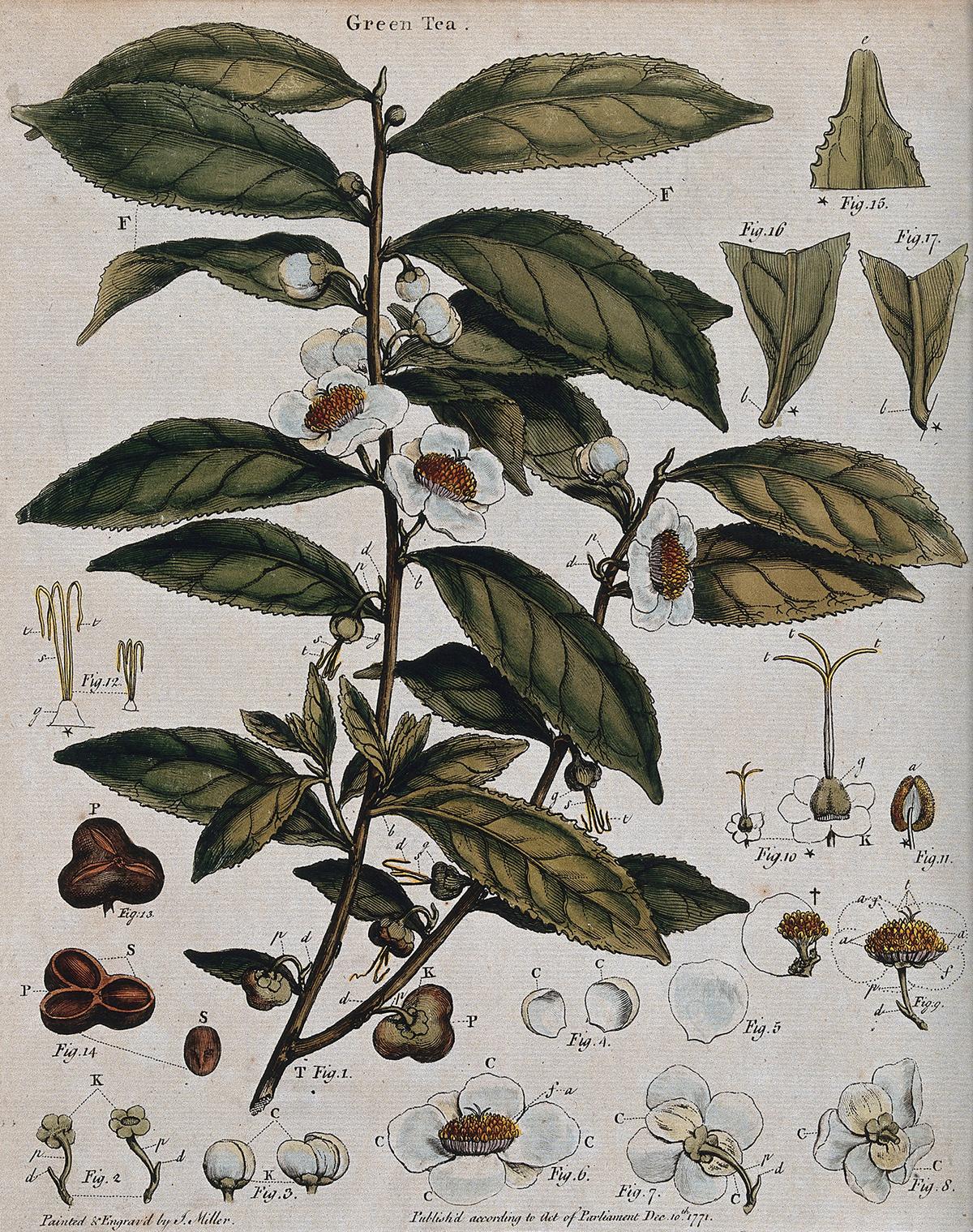
The Queen’s Tea
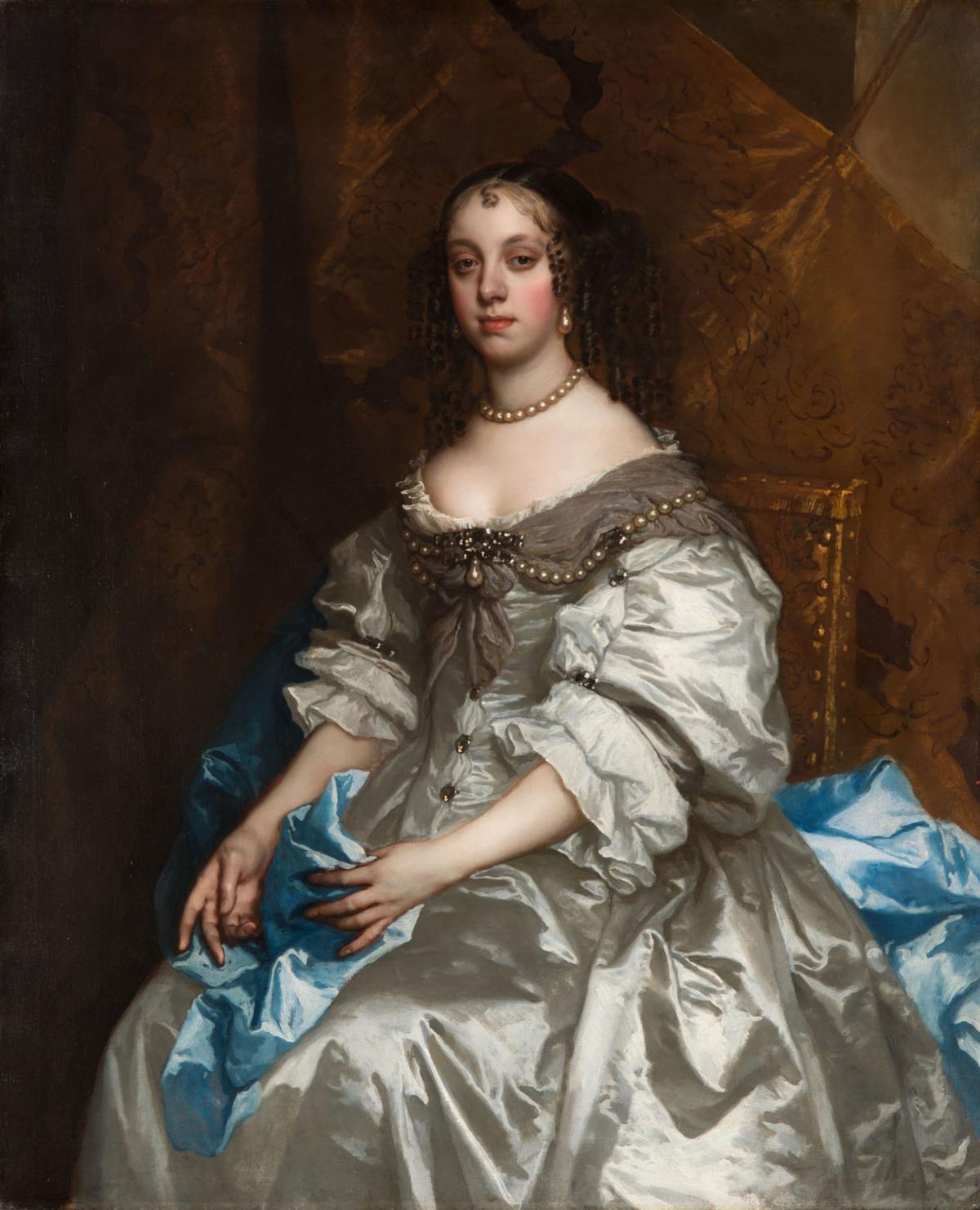
Royal Tea Party
As tea consumption continued to surge, a new art genre emerged in the early 1730s called conversation pieces. In the beginning, patrons and collectors were royalty and nobility, but interest in such pictures spread rapidly to the middle class. Artworks belonging to this category were small-scale. The subjects were informal groups set in domestic interiors or garden exteriors. Many show figures drinking tea, and a notable example is Charles Philips’s 1730 “Tea Party at Lord Harrington’s House, St. James’s” at the Yale Center for British Art.
Although Philips’s career lasted only a decade, he was a leading artist in the conversation piece genre, and scholars consider this picture his most ambitious canvas. Lord Chetwynd commissioned this painting for his country house. Philips included him as the cardplayer at the center table on the right. The subject, though, is a tea party of prominent figures at the London home of the Earl of Harrington.
The aristocratic host, Earl of Harrington, does not explicitly feature in the picture because he was on a diplomatic mission at the time of its creation. Instead, the Museum explains, “he is represented vicariously by his room, decorated to the highest standards and latest fashions with still-life and ideal landscape paintings above the doors and fireplace, damask hangings, and a Turkish carpet.” The composition of the interior is rigorously symmetrical, typical of Philips’s work.
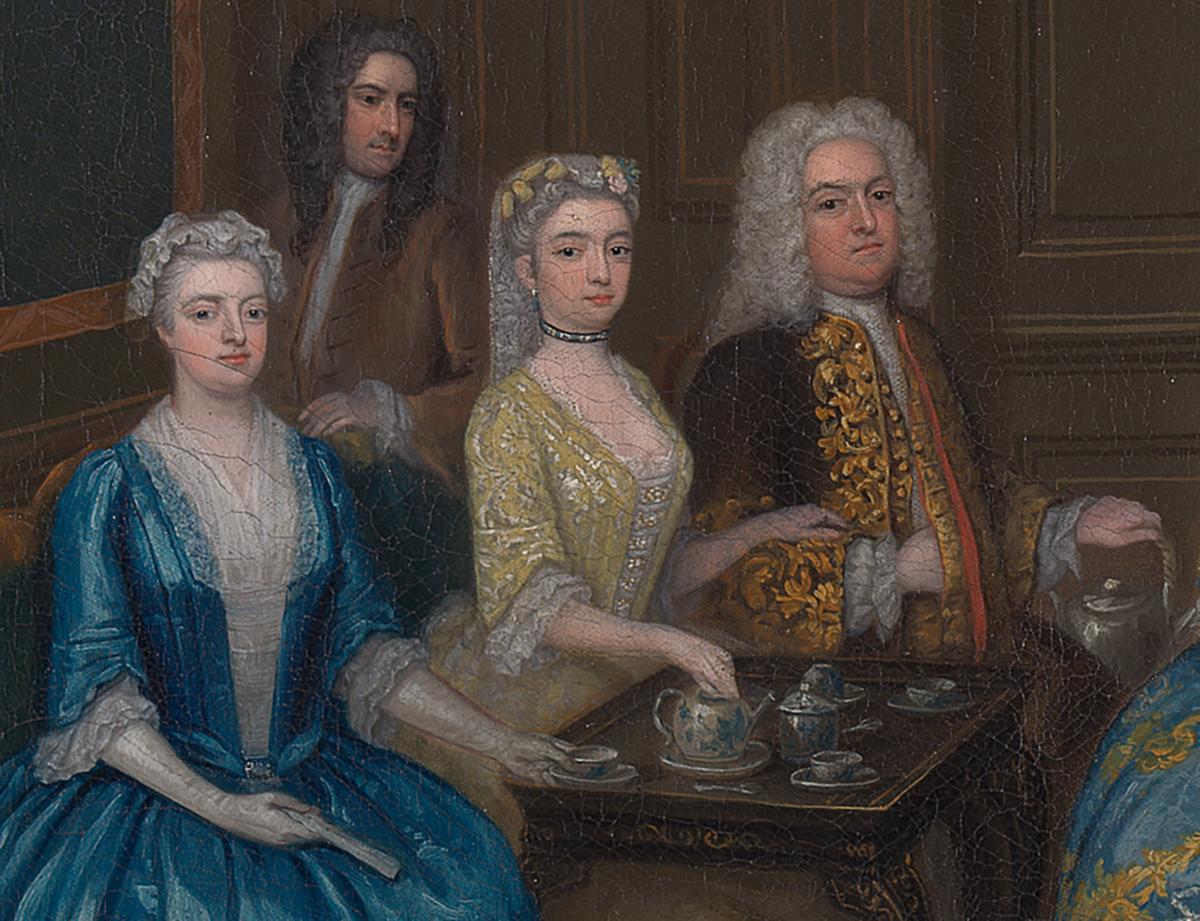
The artist renders the teaware with minute details. The blue and white porcelain set may have been imported from China. However, the large kettle appearing to glint silver suggests a local provenance, since European silversmiths were already creating their own silver objects to use for tea by the time of the painting. A stunning trio of two tea caddies and a sugar box at The Metropolitan Museum of Art that date to 1738–39 reveal the technical brilliance, innovation, and ornate aesthetic of the silversmith Paul de Lamerie.
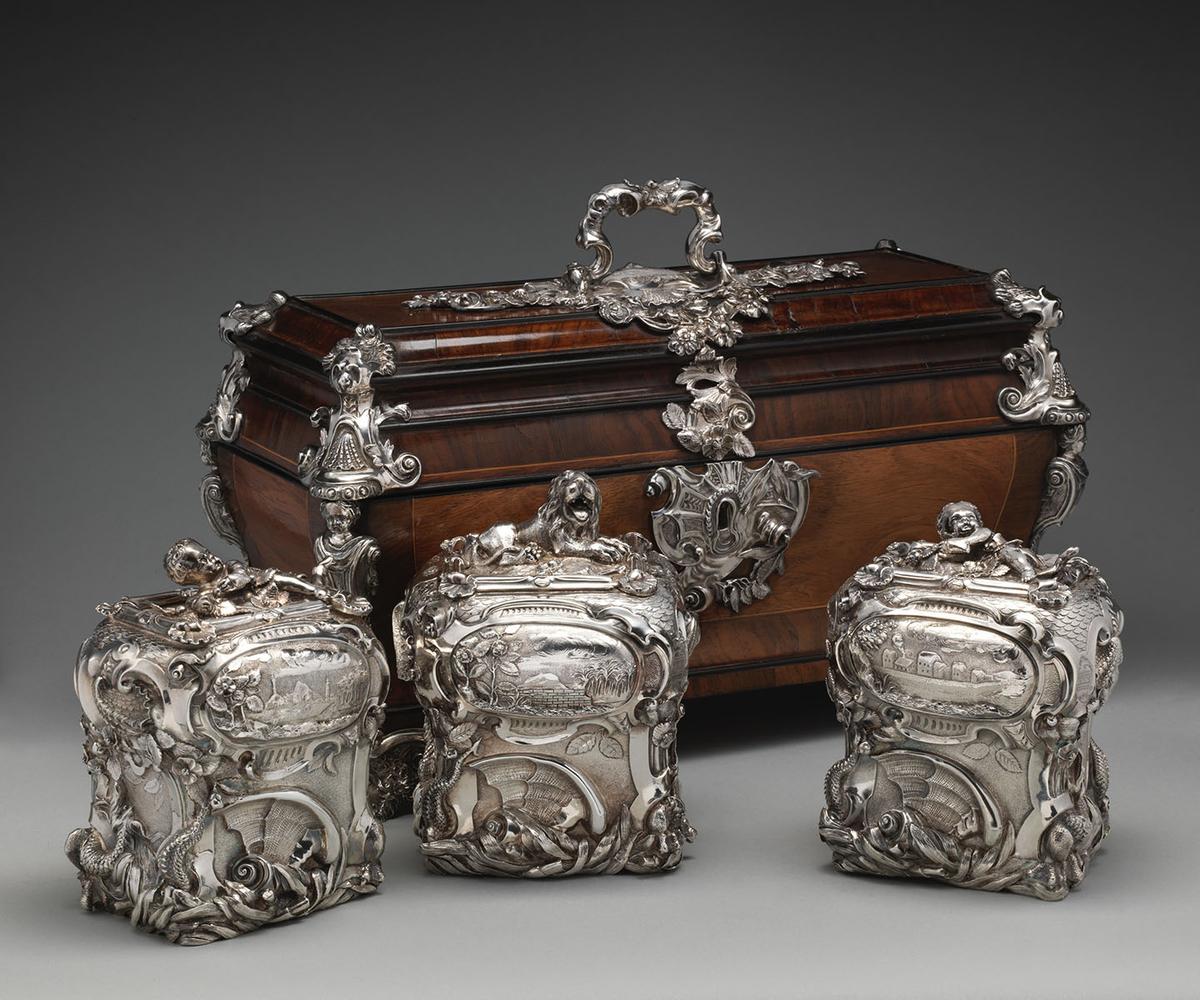
Chinese Porcelain

In addition to conversation pieces, the still life genre featured tea sets as subjects. The exquisite painting “Still Life: Tea Set” dates to the final decade of the career of Swiss artist Jean-Étienne Liotard (1702–89). Liotard was born in Geneva and trained partly in Paris. He traveled extensively, working in London, the Netherlands, Vienna, Rome, and Constantinople for an extended period of time, before returning to his hometown. Famous for his mastery of pastel and refined applications of pigment, Liotard specialized in portraits and genre scenes. In the latter part of his career, he painted still lifes with tea and coffee sets as subjects. Today, only five of these paintings are known.
“Still Life: Tea Set” at the Getty Center showcases costly Chinese porcelain and silver spoons. The artist might have kept it on display in his studio to show prospective clients his elegant style and ability to depict volume, texture, and light. The picture shows a tray laden with teapot, sugar bowl, milk jug, a lidded vase, and half a dozen cups and saucers.
Despite the luxurious tea-time accessories, everything is topsy-turvy. Fine-edged cups are turned upside down or on their side, glinting spoons are laid in all directions, and crusts of buttered bread are scattered about the tray. The Museum writes, “Combining the transparent, reflective and brightly-patterned objects allowed the artist to portray strong visual contrasts.”
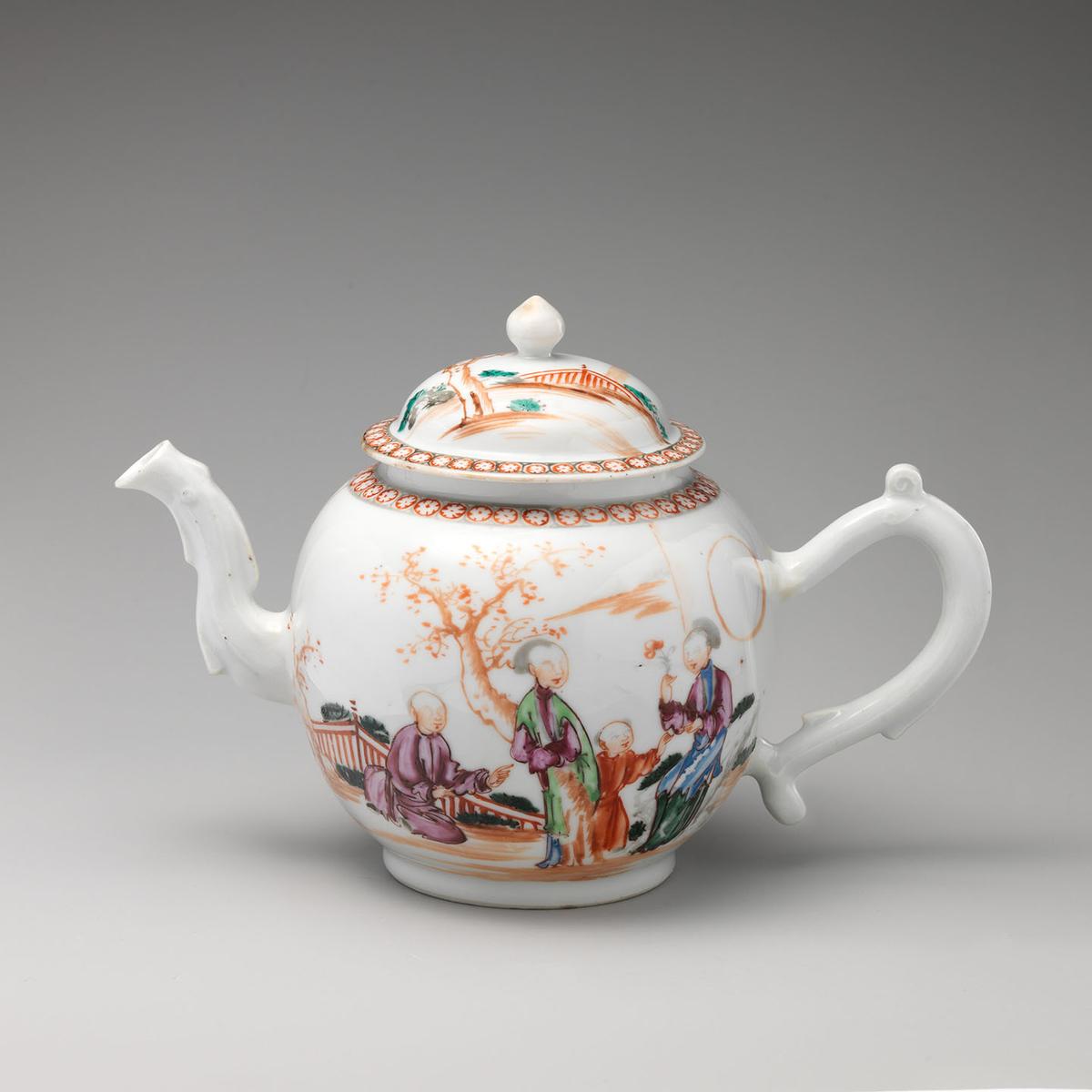
European tea drinkers coveted Chinese porcelain tea services, or those inspired by the style. A circa-1770 teapot at The Met is decorated with a colorful figural grouping similar to the pattern featured in Liotard’s canvas.
The Museum’s object was made in China specifically for the European market. As the demand for teaware grew, porcelain manufactories sprang up in Europe. Beginning in the 1740s, local British artisans produced a range of porcelain teapots that included coarse, amusing, luxurious, and even political examples. An ardor for Asian-inspired patterns, especially the quintessential Chinese blue and white palette, endured. An example of this at The Met, which also dates to around 1770, is adorned with a vegetal motif and was made by the British Worcester factory.
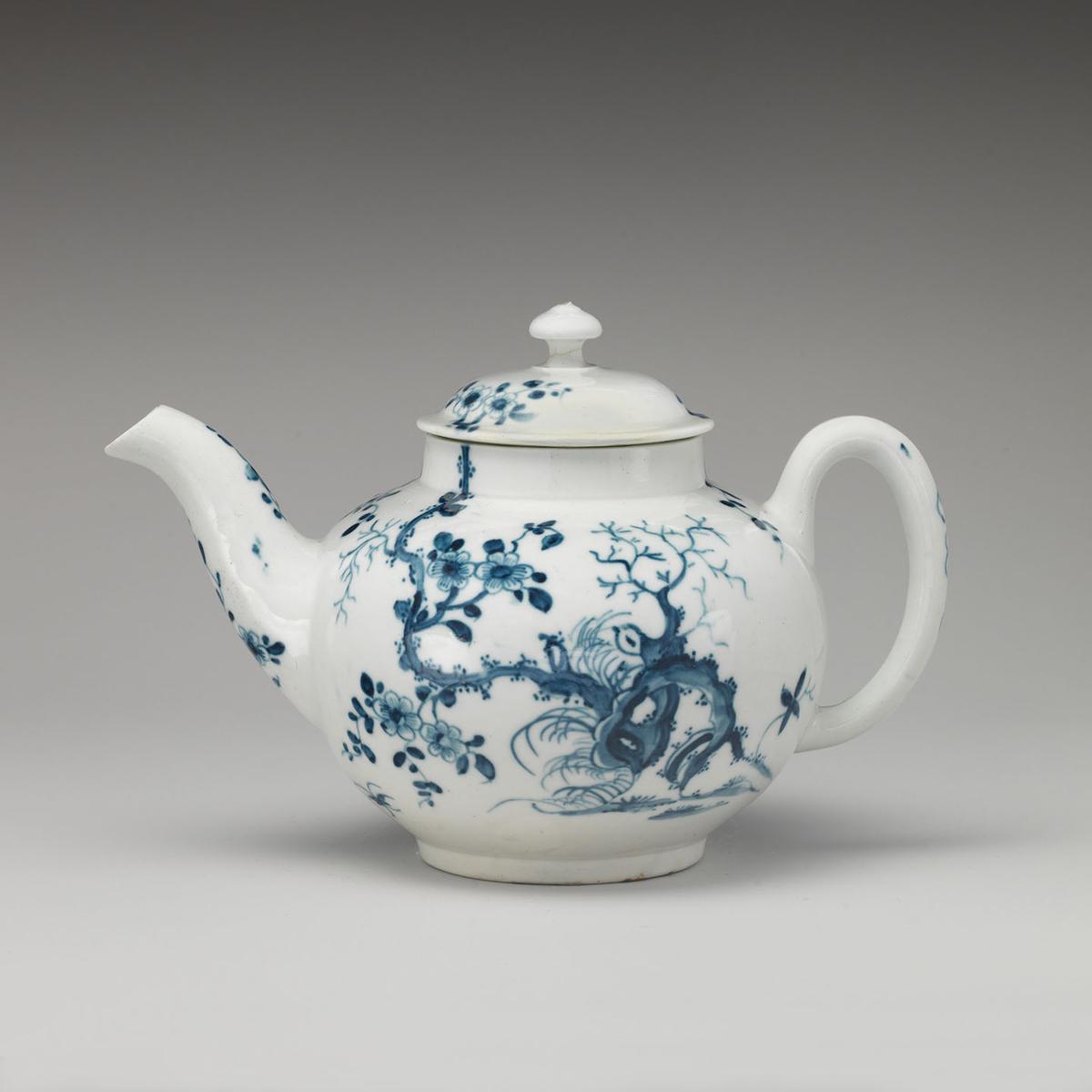
‘Five O’Clock Tea’
Tea and its rituals continued to be appreciated and expanded in the 19th century. The concept of the now-classic afternoon tea model was introduced by the Duchess of Bedford in 1840. While tea was enjoyed by most sectors of the public at the time, it continued to be served in upscale social settings as a symbol of refinement and elegance.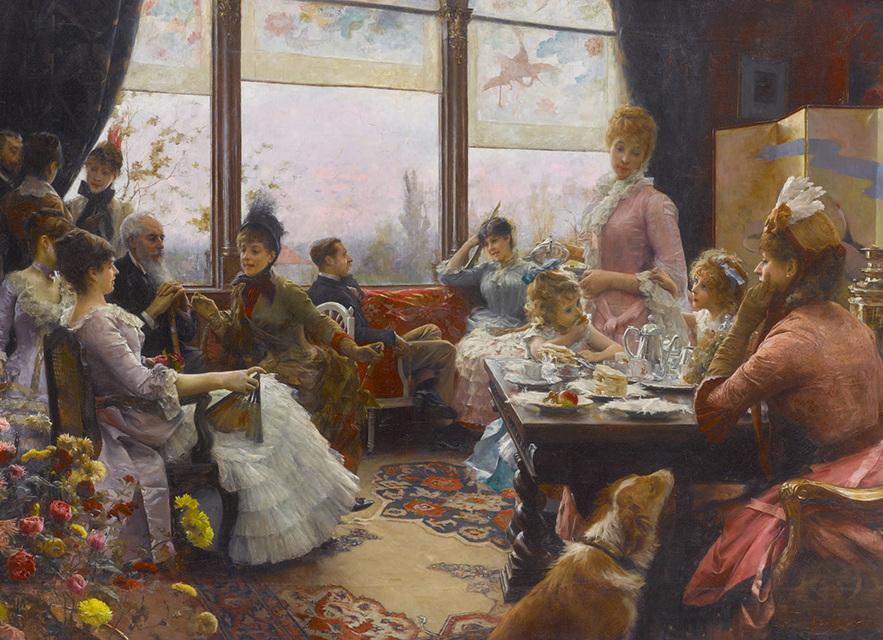
Born in Britain, Stewart was raised in Paris and spent his career in his adopted city. Known as the “Parisian from Philadelphia,” he partook in high society. Tycoons, aristocrats, artists, actors, and expatriates often feature in his complex group portraits.
It is believed that this painting depicts a tea party in a Parisian drawing room for Americans living abroad. The artist included himself as part of the assemblage: The profile on the far left is a self-portrait and his collie, Jinny, is posed at right, ready to receive potential treats from the tea table.
The salon’s interior is as lavish as that of Philips’s tea party painting, and it reflects a taste for foreign decorative arts of the late-19th century. The period’s Aesthetic Movement was especially fond of Japonisme. The Japanese influence can be seen in the folding screen and the painted rice paper window shades that allow softened late afternoon light to enter and illuminate the lavish furnishings and fashionably dressed attendees chatting and sipping tea.
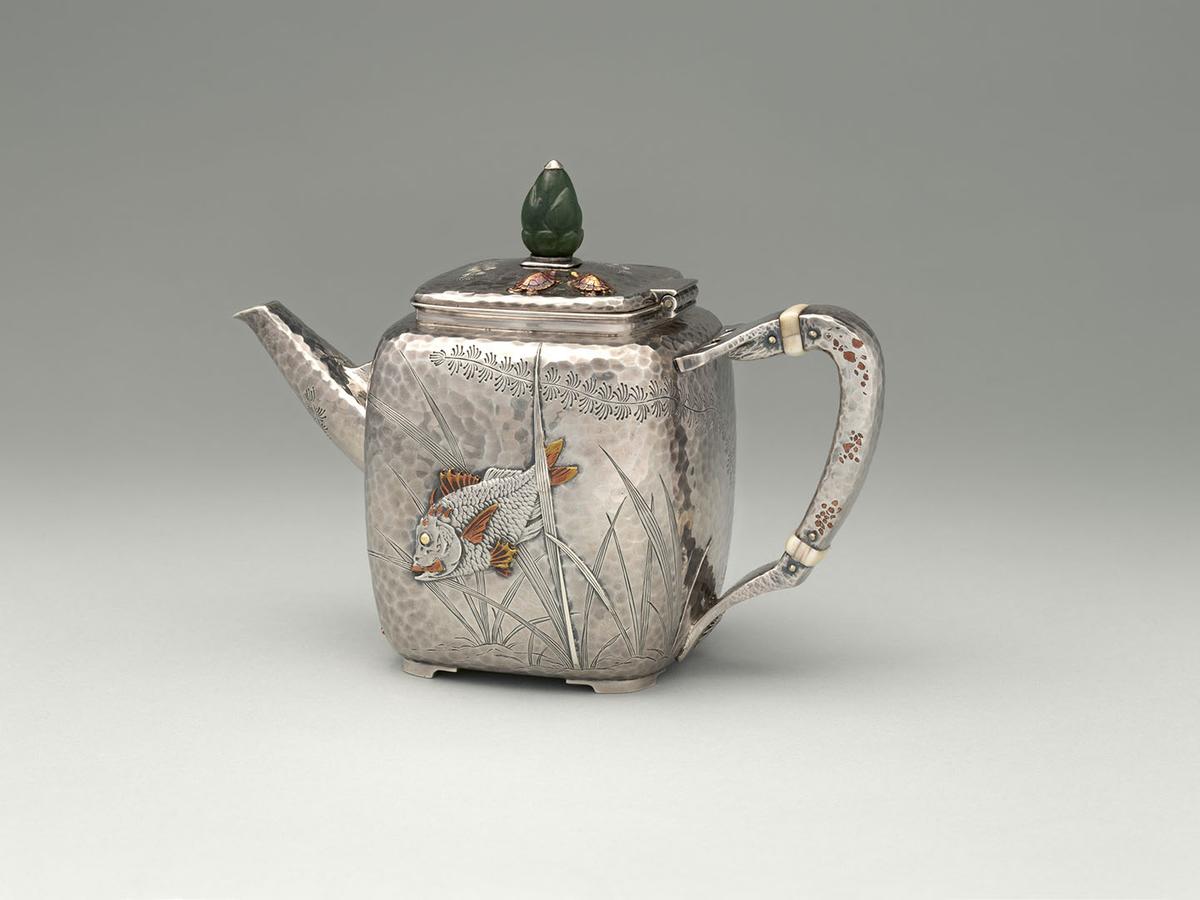
One can easily imagine The Met’s Tiffany & Co. silver teapot from 1880 being featured in “Five O’Clock Tea.” Tiffany, the foremost American silversmithing and jewelry firm, was famous for its creations in the Japanese style during the late-19th century. The Museum writes, “Indeed, Tiffany & Co. won the Grand Prize for silverware at the 1878 Paris Exposition Universelle, with the judges citing the originality and virtuosity of the firm’s Japanesque silver.” This stunning teapot features asymmetrical decorations of whimsical fish and reptiles, a jade finial, and ivory and copper detailing.
Artists and artisans have continually been inspired by tea. As time marched on and new aesthetics and styles came into vogue, tea’s societal and artistic importance remained a constant. Whatever your cup of tea, these beautiful works are a feast for the eyes.

